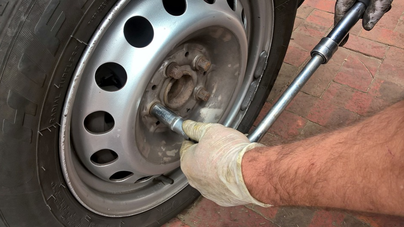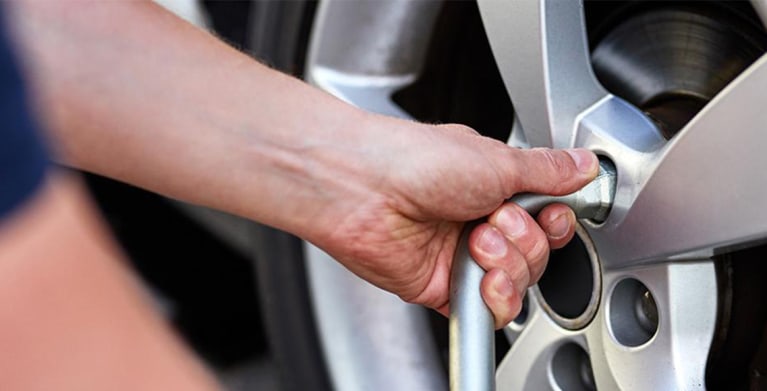Tire Service: The Influence of Climate Condition
When it comes to ensuring optimum performance and safety on the road, recognizing the impact of weather conditions on tire service is vital. GMC Tire Service. In this conversation, we will discover the intricate partnership between climate conditions and tire service, shedding light on the significance of weather-specific tire upkeep practices and considerations.
Warmth and Tire Efficiency
When revealed to high temperature levels, tires experience modifications in efficiency that can substantially affect vehicle security and handling. The warm created from long term driving or warm climate conditions creates the tire rubber to soften, causing decreased walk life and increased wear. As the rubber becomes softer, the tire's grasp when driving decreases, impacting stopping distances and general traction. In severe instances, too much warm can even cause tire blowouts, presenting a severe safety risk to the car and its occupants.

Cold Weather Effects
Winter conditions can have a considerable effect on tire performance and safety and security. As temperatures drop, tire rubber can solidify, resulting in reduced traction on icy or snow-covered roadways. In cool weather condition, tires may additionally shed atmospheric pressure a lot more quickly, which can impact handling and gas efficiency. In addition, cold temperature levels can cause tire sidewalls to stiffen, enhancing the threat of damages from potholes or other road hazards.
To minimize the results of chilly weather on tires, it is important to consistently examine tire pressure and inflate them to the supplier's suggested degrees. Utilizing wintertime or all-season tires designed for winter conditions can additionally enhance grip and hold on icy or snowy roads. Correct tire maintenance, including routine examinations for wear and damages, comes to be much more critical during cooler months to guarantee optimal efficiency and safety and security.
Rainy Issues Impact
Tires with damaged treads are more susceptible to hydroplaning, where a layer of water constructs up in between the tire and the road surface area, leading to loss of grip. To combat this, vehicle drivers need to frequently inspect their tires for ample step depth and think about spending in tires especially made for wet conditions.
Furthermore, rainy weather can additionally decrease visibility, making it challenging for vehicle drivers to see the road in advance clearly (GMC Tire Service). In such conditions, it is important to adjust driving try this website speeds as necessary and preserve a risk-free complying with range to permit for sudden quits. Effectively filled with air tires can also aid in keeping control on wet roadways by supplying better handling and hold
Snow and Tire Security
When driving in snowy conditions, having the ideal tires can make a substantial distinction in security and efficiency. Wintertime tires are made with unique rubber compounds and walk patterns to supply far better grip on snow and ice contrasted to all-season tires.

Additionally, vehicle drivers ought to think about setting up tire chains in extreme snowy conditions. Tire chains provide extra traction by gripping the snow and ice, improving stability and control. However, it is essential to adhere to manufacturer instructions when using and setting up tire chains to stop damages to the tires and automobile. By picking the best tires, maintaining correct inflation, and taking into consideration extra grip aids like tire chains, vehicle drivers can improve their security when navigating snow-covered roads.
Weather-Related Tire Maintenance
When faced Go Here with different climate problems, correct tire upkeep becomes an important aspect of lorry safety and performance. Weather-related tire upkeep incorporates a series of techniques intended at making certain ideal tire feature and durability in various weather condition scenarios. One vital aspect of weather-related tire maintenance is tire pressure regulation. Changing temperature levels can cause tire stress to vary, influencing traction and gas performance. Consistently examining and adjusting tire pressure according to maker recommendations is important for secure driving in changing weather. In addition, tire step deepness plays a substantial role in taking care of different weather condition components. Tires with ample step depth provide far better hold on wet or icy roadways, minimizing the threat of skidding or hydroplaning. When step wear reaches a particular depth is vital for keeping grip and security in damaging weather condition, checking tire walk on a regular basis and replacing tires. By prioritizing weather-related tire maintenance, motorists can boost safety and security, boost Check This Out lorry performance, and prolong the lifespan of their tires.
Conclusion
In conclusion, weather condition problems have a substantial influence on tire efficiency and safety and security. From warmth impacting tire pressure and use to chilly weather condition reducing grip, it is important to think about the weather when keeping and using tires.
In this conversation, we will explore the intricate partnership in between weather condition conditions and tire service, losing light on the significance of weather-specific tire upkeep techniques and considerations.

Comments on “Experience Accuracy with GMC Tire Service at Morris Tires”